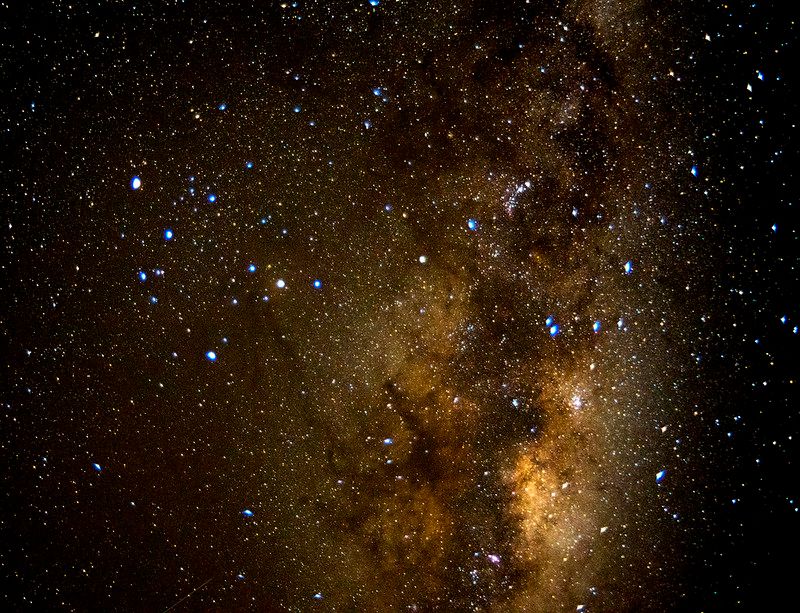Home/Curriculum resources/Indigenous Astronomy and the Solar System/Activity 2 - Observing retrograde motion using Stellarium
Learning Area:
Science
Year levels:
Level 5, Level 6
Suggested timing:
30 minutes
Required resources:
Stellarium app, Laptop/tablet

Activity 2 - Observing retrograde motion using Stellarium
This activity is a part of the Indigenous Astronomy and the Solar System resource.
Scorpius featuring Mars and Saturn. Photographer: Peter Lieverdink. Source: Flicker. License: CC BY-SA 2.0.
In this activity, students will use the Stellarium digital planetarium to visually explore retrograde motion of planets, observing their positions relative to stars and constellations, and taking notes on their movements. This exercise provides a modern visual aid for understanding retrograde motion and prompts students to consider how Indigenous Peoples in the past observed and recorded such phenomena in their oral traditions without the use of computers.
Step by step guide
Step 1: Familiarise with Stellarium application
See Activity card What is Stellarium? if not familiar with this application.
Step 2: Exploring retrograde motion
It is useful for students to see how retrograde motion works visually, and to provide some local examples. You can use the digital planetarium software Stellarium 0 to accomplish this. This can be done by the teacher at the front of class, or students in smaller groups.
Step 3: Guided exploration with students
Download and open the Stellarium program Desktop application.
Under the “Sky and Viewing Option’ Window on the left (F4 will get you there), click on Markings tab (the fourth entry along the top series of tabs). Select “Ecliptic of date”.
On the “Sky” tab (first tab along the top) in the same window, select “Show Planet Orbits”.
In the “Date/Time” window (hover over the left-hand side of the screen or press F5), move the clock forward to when it is dark. You may need to press ‘P’ to show the night sky.
Have the students note the positions of the planets with respect to background stars and constellations.
Move the date forward (but not the time), day by day, so the students can see how the planets move.
Have students take notes by seeing how far the planet is from one or two reference stars each night. Ask them to find out when the planets are moving in retrograde (‘backward’).
Step 3: Independent exploration
Allow the students to play with the program, asking if they can find a date when the planets come into conjunction with the Moon or each other.
This serves as a visual aid, enabling the students to see how careful observations are needed to note things like retrograde motion.
Step 4: Discussion
Without the use of a computer, how did Aboriginal and Torres Strait Islander Peoples in the ancient past observe and record this phenomenon in their oral traditions?
Related activities within this resources:

Inquiry-based learning questions
These inquiry-based questions are provided for flexible classroom use, allowing teachers to tailor discussion and reflections specific to their classroom needs.

What is Stellarium?
Discover Stellarium, a digital planetarium that offers a vivid depiction of the night sky worldwide, showcasing the celestial dance of the Sun, Moon, planets, and stars in real-time.

Activity 1 - Planet nomenclature
In this activity, students will research and share Aboriginal or Torres Strait Islander names for visible planets, explore their ordering by distance and size, and analyse how these names reflect knowledge about the planets, offering insights into cultural perspectives on celestial bodies.
Suggested timing:
30 minutes
Required resources:
Laptop/tablet, Internet access

Activity 3 - Observing the planets (Homework task)
In this homework activity, students will hone their observational skills by identifying planets in the evening sky without relying on apps or aids.
Required resources:
Star wheel for the southern hemisphere